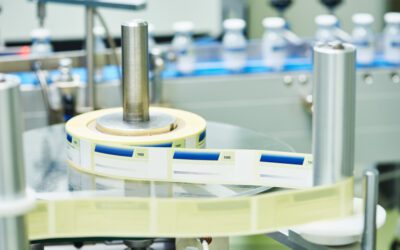Rhaisa A. Crespo, Ph.D.
Research Scientist
In food microbiology, all test methods fall into one of two categories: qualitative methods or quantitative methods. Qualitative methods are very specific for a particular analyte (usually a pathogen that one expects to be present at a low concentration), and are designed to tell the user whether the food sample is “positive” or “negative” for that analyte. This testing approach usually involves incubating a food sample in a nutritious liquid medium (i.e. enriching) to make a single cell multiply into millions of cells. The incubated mixture is then tested with a detection assay such as a Polymerase Chain Reaction Assay (PCR) or Enzyme-Linked Fluorescence Assay (ELFA) that gives a “positive” or “negative” result. In general, one will have zero tolerance for any amount of an analyte tested via a qualitative method, so the “positive” or “negative” result is sufficient.
In contrast, quantitative methods are much broader in their specificity (usually targeting broader indicator or spoilage organism groups that are present at a higher concentration), and are designed to provide a concentration per gram of food sample for these organism groups. Generally, one has some allowable amount for an analyte tested via a quantitative method, and so needs to know “how much” of the analyte is present in order to make a decision. In most instances, quantitative testing approaches involve mixing dilutions of a food sample with an agar medium (i.e. plating) and then counting the colonies that develop in the agar after incubation. This works well when the concentration of organisms is high enough per gram to dilute the sample and count colonies on an agar plate after incubation is complete.
However, what is the laboratory to do when a customer desires to know the concentration of a specific organism (usually a pathogen) that is expected to be present in a food sample at a concentration that is too low to use a quantitative method? Likewise, what if there is no quantitative method that is specific enough to allow one to accurately identify colonies of an organism based on their appearance on agar plates? For decades, the answer to both of these questions has been to use the Most Probable Number (MPN) approach.
The MPN approach has been a reliable tool in the analysis of bacterial contamination in a wide variety of matrices since the early 1900s. This approach relies on statistical models that use qualitative methods in a semi-quantitative way. In the MPN approach, one will enrich several replicates of several portion sizes of a sample (usually three replicates times three portion sizes) and will test these with a qualitative method. Then, based on the number of positives or negatives that are obtained with the qualitative method among the replicates at each portion size, one can use statistical models to calculate the estimated concentration of the analyte in the sample along with a 95% confidence interval. This approach works exceptionally well to provide reliable estimations for very low analyte concentrations. However, MPN testing is very tedious, slow, and expensive due to the need to conduct multiple analytical tests per sample.
Although the MPN approach has been the gold standard for decades, scientists have recently realized that Real-Time PCR (RT PCR) methods, which are generally used for qualitative testing approaches, also provide quantitative information. Under certain incubation and testing conditions, the strength of the RT PCR amplification signal can be mathematically correlated to the concentration of the analyte present in the sample. More importantly, this can be done with a single test portion, not multiple test portions like the MPN approach. Due to the time and money saved by testing one portion with RT PCR versus multiple portions with the MPN approach, RT PCR has quickly become one of the preferred methods to provide reliable concentration data for low concentration analytes in food microbiology.
Salmonella is one of the most problematic foodborne pathogens. In fact, among 31 pathogens evaluated by the Center for Disease Control and Prevention (CDC), Salmonella ranks number two among the top five pathogens causing foodborne illnesses, and ranks number one as the foodborne pathogen resulting in the most hospitalizations and deaths due to domestically acquired foodborne illnesses. Hence, Salmonella is of great concern in the food industry, and in most food products, there is zero tolerance for Salmonella. However, some food products that are intended be cooked before consumption, like raw meat and poultry, do not require zero tolerance for Salmonella. Yet, despite not having to comply with a zero tolerance policy, producers of these products often want to know (and manage) the load of Salmonella in their products and production environments. Furthermore, the demand for this type of testing data has recently increased. Until recently, the only way to decipher the concentration of Salmonella in a sample (which is not measurable using a quantitative method) was to use the MPN approach, which is less than ideal.
The Hygiena BAX® System now provides a solution to meet this challenge. BAX® employs RT PCR methods that have traditionally been used as qualitative methods to detect bacterial contamination in food matrices. Employed worldwide in countries like Canada, the United States, and China, BAX® RT PCR methods present several advantages over other microbiological methods such as faster results, superior specificity, rapid testing with up to 96 samples per batch, and greater sensitivity, detecting as low as one cell per 25 or 375 gram portion.
To meet the increased demand for Salmonella quantification, while at the same time avoiding the tedious and expensive MPN approach, Hygiena has created the BAX® System SalQuant™ approach. The BAX® System SalQuant™ approach uses amplification signal data from the BAX® System RT PCR Assay for Salmonella and correlates it with statistical models to provide Salmonella concentration results for a sample. SalQuant™ has several advantages over traditional methods like MPN by providing quantitative data with higher sensitivity, faster results (~24 hours), and fewer false positives, all at a lower price to the customer. The figure below provides a list of some of the most common matrices that can be tested using the BAX® System SalQuant™ approach. FSNS has the capability to perform SalQuant™ testing in every one of its laboratories. So, if this sounds like it is something that would be useful to you, please do not hesitate to reach out to your account representative or to customerservice@fsns.com to inquire how FSNS may be able to help you implement the SalQuant™ testing protocol today!
References
https://www.cdc.gov/foodborneburden/2011-foodborne-estimates.html
https://www.hygiena.com/wp-content/uploads/2020/06/MBFB-BAX-System-Q7-Brochure-EN.pdf
https://www.hygiena.com/wp-content/uploads/2020/06/WPFB-Salquant-New-Era.pdf



![Top 10 Reasons for a BRC Audit Non-Conformity [2025]](https://fsns.com/wp-content/uploads/2022/08/shutterstock_1033058215-1-400x250.jpg)